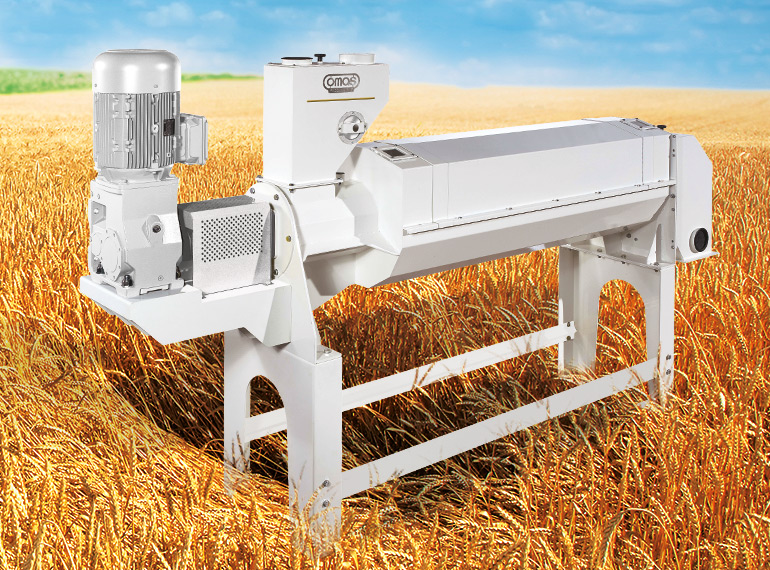
In the wheat processing within the food industry, before arriving at the grinding process it is necessary to submit the cereal to preliminary treatments, so that the raw material is suitable to be processed into flour.
The two main treatments to be performed before grinding are wheat cleaning and conditioning.
Wheat cleaning to remove impurities
The cleaning process is carried out so that the grains to be ground are healthy and free from impurities, including dust or foreign bodies.
They are generally removed by the use of specific machines which, by exploiting the different densities and particles sizes, remove them from the wheat, as happens for example inside the trieur.
The cleaning process only, however, is not sufficient to obtain a material ready to be processed: once the clean cereal is obtained, it is necessary to make it suitable for grinding, so that the grain can be easily broken down into its three parts and the flour has a specific grain size.
Why is wheat conditioning so important?
The dehydration of fruits may lead to some difficulties in the event that they are not subjected to conditioning, which is essentially an artificial rehydration.
Making the wheat grain absorb the water, basically has two functions:
- Make the integuments soften, by making their fragmentation coarser. In this way particles produced are twice the size of the amylaceous ones, while the subsequent separation is made easier to obtain the different qualities of flour 0 or 00. Indeed, the harvested grains usually have very dry and friable, which would have easily turned to fine powders. Therefore it would be very difficult to differentiate the bran (deriving from the grain outer skin) from the flour, that this flour type 0 or flour type 00. The bran is removed by exploiting the bigger grain sizes with respect to the milled product derived from the seed starch;
- Make the starch endosperm more fragile. This enables to obtain a fine milled product and to facilitate the separation of the starch from the integuments and the germ.
During the conditioning stage, it is necessary to monitor the humidity of the cereal as, especially in the durum wheat, an excessive absorption of water could alter the starch structure and ruin the quality of the grinding.
The grains are usually stored in automatic or semi-automatic dampening systems, which detect the water content inside the cereal through the use of microwaves. The ideal amount to attain is just under 20% of humidity inside the grain.
How to increase the percentage of water contained in the grain of wheat?
A very effective method to allow a high level of water absorption is the use of intensive grain dampeners. The grains of wheat are placed in a centrifuge which, keeping them in motion, separates them and therefore increases the fruit surface exposed to water that soaks more easily.
The use of this machine enables to increase the water content of the wheat by up to 5%, that is the maximum percentage of liquid that can be added during the process without interfering with the quality of the grinding.
The correct wheat conditioning is essential also during the grinding stage, since for quality reasons it is not possible to make further changes to the humidity of the product once this process is completed.



